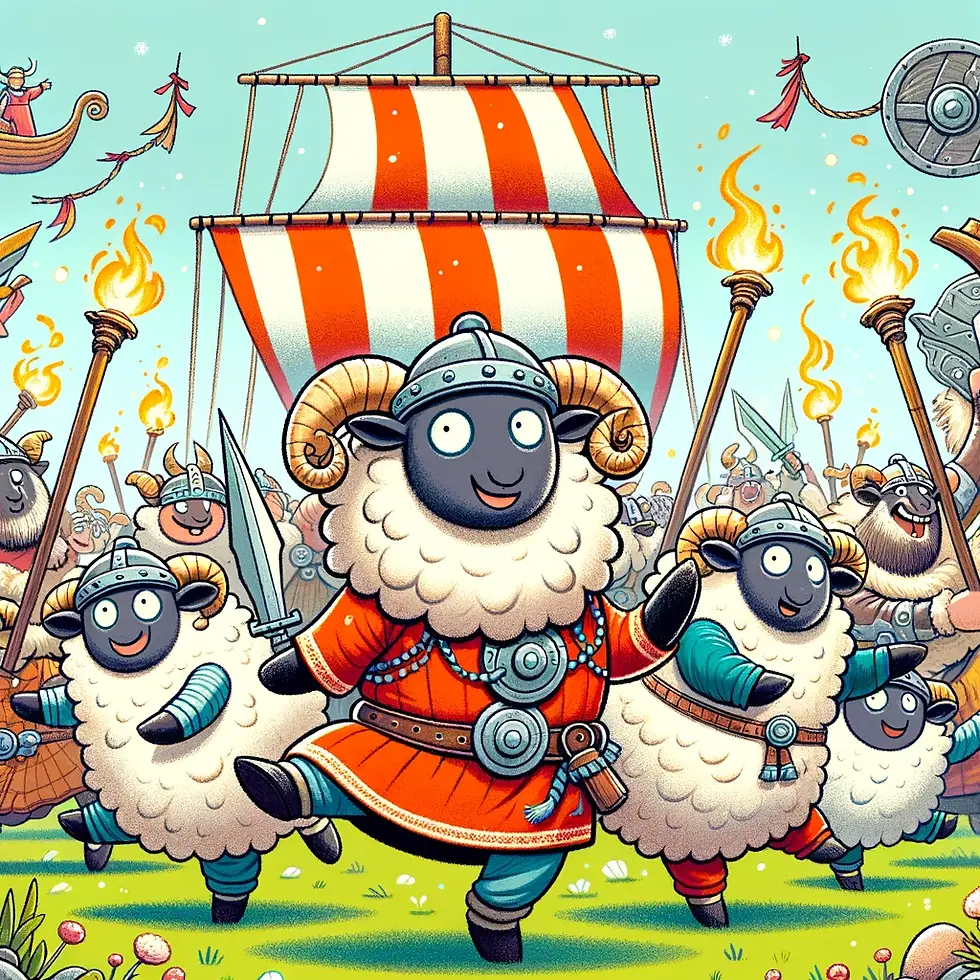




WELCOME TO AN ENTERTAINMENT SITE FOR SCOTTISH COUNTRY DANCERS!
Enjoy this curated selection of theme-related dances for celebrations and holidays, or find a dance associated with a special calendar day, or EVEN your own birthday!
Jan 27

Up Helly Aa
The Viking's Sheepskin
Other Scottish Country Dances for this Day
Today's Musings, History & Folklore
"Roll their glory down the ages,
Sons of warriors and sages,
When the fight for Freedom rages,
Be bold and strong as they!"
~ Up Helly Aa song, J. J. Haldane Burgess lyrics
Shetland roots? Do you feel the blood of Viking warrior ancestors coursing through your veins? If you are channeling your inner Viking more towards dancing these days, grab your sheepskin mantle against the cold weather and ready yourself for the Up Helly Aa celebration, the last of the Viking season of Yule and the biggest festival in Lerwick, Shetland. Typical activities in Lerwick include marching through town, torch lighting, and the burning of a Viking Galley at the end of the night! Lerwick's fire festival dates from the 1880s and grew out of a way to redirect the boredom of young men after their return from fighting in the Napoleonic Wars! A tradition of "tar barrelling" which took place during the Christmas and New Year season consisting of squads of young men who would drag barrels of burning tar through town on sledges, making mischief, needed addressing . Drawing inspiration from the islands' Viking history, this custom was transformed into the Up Helly Aa festival celebrated today! Keep your mischief to a minimum tonight, dancers, as you reel to and fro performing the figure known as the "Progressive Sheepskin" taken from a "Sheepskin Hey for Three", described in the Dancing Master (Playford), 1690. ! 🏴 🐑 🔥
The Viking's Sheepskin
Sheep were important to the Vikings. They provided milk, skins, leather, bone, meat, and wool. Viking sheep were hardy animals, although they were kept indoors during the winter. The Vikings took their sheep with them on their travels. Sheep breeds found today in Greenland, Iceland, Faroe, Shetland, Orkney, the Isle of Man and the island of Ouessant, in northern France, are all descended from Viking sheep!
Should you need inspiration for dressing like a Viking, there are few examples as clothing rarely survives in the archaeological record, but examples of men’s jewellery have been uncovered (mostly from graves) and give indications as to how clothing was worn and fastened.
Men wore trousers, tunics and cloaks made from wool and linen, and animal skins were also used to keep warm in the winter. Clothing would have been secured with bone or metal pins, large penannular brooches and leather belts.
As a Viking man, the hair and beard were of major importance, determined by historical royal bynames like Sweyn Forkbeard, whose beard was probably divided in two, and Harald Fairhair, who must have had a fine head of hair. The numerous finds of combs also shows the attention to maintaining the health and styling of hair.
Beards were also well groomed. This can be seen, for example, on a carved male head found at the Oseberg ship burial in Norway. The male has a long elegant moustache and beard.
Click the imagined Viking wearing his sheepskin for more on sources for Viking inspired clothing!
Click the dance cribs or description below to link to a printable version of the dance!






